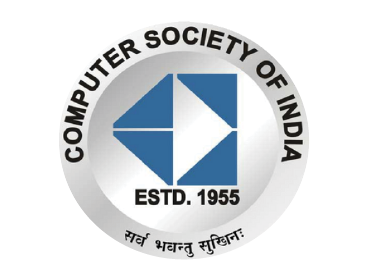



Faculty Mentor:
Ms. Bhavna Galhotra
Student Name:
Shefali (MCA-I)
1. INTRODUCTION
Surgery is a necessary part of healthcare, especially for serious conditions like cancer. Yet, every surgery comes with a risk of complications. This is true even when working with the best surgeons. The robotically-assisted surgical systems can lower many of the risks that can come along with traditional open surgery.
2. What is Robotic Surgery?
Robotic surgery is a type of minimally invasive surgery. “Minimally invasive” means that instead of operating on patients through large incisions, we use miniaturized surgical instruments that fit through a series of quarter-inch incisions. Robotic surgery entails the use of surgical robots to facilitate the performance of complex operations without the need for a large incision.
3. Origin
The first robot to assist in surgery was the Arthrobot, which was developed and used for the first time in Vancouver in 1983. The robot was used in an orthopaedic surgical procedure on 12 March 1984, at the UBC Hospital in Vancouver. In 1985 a robot, the Unimation Puma 200, was used to place a needle for a brain biopsy using CT guidance. PROBOT was then used to perform prostatic surgery and ROBODOC to assist with hip replacement surgeries. The latter was the first surgical robot that was approved by the FDA. Further development of robotic systems was carried out by SRI International and Intuitive Surgical with the introduction of the da Vinci Surgical System and Computer Motion with the AESOP and the ZEUS robotic surgical system. The first robotic surgery took place at The Ohio State University Medical Center in Columbus, Ohio under the direction of Robert E. Michler.
The world’s most advanced surgical robot
The da Vinci Surgical System is a robotic surgical system made by the American company Intuitive Surgical. Cleared by the Food and Drug Administration (FDA) in 2000, it is designed to facilitate complex surgery using a minimally invasive approach, and is controlled by a surgeon from a console. The da Vinci System is called "da Vinci" in part because Leonardo da Vinci's "study of human anatomy eventually led to the design of the first known robot in history.

Fig 1: Da Vinci Si Robots
4. How does the surgical robots help surgeons?
Surgeons who use the robotic system find that for many procedures it enhances precision, flexibility and control during the operation and allows them to better see the site, compared with traditional techniques. Using robotic surgery, surgeons can perform delicate and complex procedures that may have been difficult or impossible with other methods.
5. Can we trust on Robotic surgery?
The robot allows surgeons to view things magnified and in 3-D instead of as a flat image. Seeing better is always safer. In addition, the robot instruments are able to bend and flex like a person’s wrists. With traditional laparoscopic surgery, the tools cannot bend.
Wristed instruments make operations much easier, and thus, safer. They also allow surgeons to work in difficult areas, such as around the oesophagus or low in the pelvis where visualization is poor or there is little room to manoeuvre.
6. How does Robotic surgery works?
The Surgical system has two separate but connected sections:
6.1 The tower, which is positioned directly over the patient during surgery, contains the robot’s four arms—three that can hold a multitude of different surgical instruments, and a fourth that holds the system’s 3-D cameras. These arms are controlled by a computer that exactly replicates the movements of the operating surgeon.
6.2 The console is where the surgeon sits and operates the robot’s controls while looking into a stereoscopic monitor that provides a magnified, high definition 3-D view of the surgical site. The surgeon manipulates the robot’s four arms by manoeuvring two master controls that provide fingertip precision of movement.
The surgeon also operates a footswitch that provides additional options, such as the ability to switch between two different energy sources. Touchpads allow the surgeon to easily adjust video, audio and system settings, while the ergonomic console and the alignment of the controls and monitor are designed to keep the surgeon in a relaxed, focused position at all times.

Fig 2: Robotic Surgery
* Robotic surgery is a laparoscopic procedure, but with an added layer of technology. Rather than using a large incision, laparoscopy involves using several small incisions to perform a surgical procedure.*
s
7. Benefits of Robotic surgery:-
Robotic surgery offers many benefits to patients compared to open surgery, including:
7.1 Shorter hospitalization
7.2 Reduced pain and discomfort
7.3 Faster recovery time and return to normal activities
7.4 Smaller incisions, resulting in reduced risk of infection
7.5 Reduced blood loss and transfusions
7.6 Minimal scarring
8. Problems with Robotic surgery:-
1. Longer operation and anaesthesia times
2. Device malfunction or failure (leading to serious injury or requiring an alternate surgical approach)
3. Increase in complications can result from switching to another surgical approach
4. Bleeding (sometimes in large amounts requiring transfusion)
5. Temporary pain/nerve injury
9. Various Surgeries performed by Robots:-
Robotic surgery may be used for a number of different procedures, including:
1. Coronary artery bypass
2. Cutting away cancer tissue from sensitive parts of the body such as blood vessels, nerves, or important body organs
3. Gallbladder removal
4. Hip replacement
5. Hysterectomy
6. Kidney removal
7. Kidney transplant
8. Mitral valve repair
9. Pyeloplasty (surgery to correct ureter pelvic)
10. Pyloroplasty
11. Radical prostatectomy
12. Radical cystectomy
10. Current status of Robotic surgery in India:-
A major reason why robotic surgery in India has not progressed at a faster rate is the financial factor. Intuitive surgical controls the monopoly in marketing. The da Vinci system sells for about $ 1.2 million. The new da Vinci HD SI released in April, 2009 currently sells for $1.75 million. The annual maintenance costs along with the disposable supply cost ($ 1500 per procedure) makes it beyond the reach of many institutions and health care systems. A robotic radical prostatectomy at A.I.I.M.S. costs around INR 1.3 lakhs per case, which is much lower than the market price of Rs. 3 lakhs. The only way to tackle this and to make robotic surgery financially feasible is for multidisciplinary utilization of the robotic system to its fullest potential. The maintenance costs remains the same whether one case or 6 cases are done in a day. So it is logical that if more cases were generated out of a robotic system, the cost per case would automatically decrease. Government support is also of paramount importance to help in dissemination of robotic technology so that it becomes available to the common man at a subsidized rate.
*India can become the second largest market for robotic surgery.*
11. Impact of Robotic surgery on employment:-
Robots are now embedded with sophisticated intelligence, sensors and general high level contextual reasoning which means they can perform tasks previously the stuff of fiction. Yes, believe it or not, there really are robots performing surgeries on humans. Robot-assisted surgery can give surgeons more precise control over their instruments and an improved view of what they are doing.
Replacing employees with robots is an inevitable choice for organizations in the service sector because of the challenging and sometimes unhealthy working environments, but, at the same time, the researchers propose that it should be done in a manner that helps in improving the employment and motivation of employees in this sector.
12. Future scope of Robotic surgery:-
The future of robotic surgery is bright and is pregnant with promise. Robots and the use of information technologies can result in cost savings by decreasing the number of skilled assistants required to perform laparoscopic surgery. Newly developed, articulated robotic arms have an increased number of degrees of freedom that mimic many of the functions of the human hand and, in some instances, improve on those functions. Even more precise surgery is possible.
According to the Intuitive Surgical Investor Presentation in 2017, they have focused on three aims for technical advances; first, “enhanced imaging” which can help surgeons and staff overcome the limitations of the human eye; second, “intelligent systems” which can provide to surgeons a real-time feedback; and third, “less invasive approaches to the body”. They are expected to launch da Vinci X surgical system which is optimized for focused-quadrant surgery for procedures and can incorporate da Vinci Xi endoscope technology, instruments, and accessories.
13. A new robot is coming soon:-
A new robotic surgical system is unveiled by a British company, which is expected to operate on patients for the first time next year. The new robot named Versuis is designed and built in Cambridge. It is a rival to the American da Vinci system, which is used in more than 70 hospitals in the UK. Versius is smaller, and the company behind it, CMR Surgical, believes it will be more flexible and versatile than existing robots, allowing it to perform a wider range of operations. Versius mimics the human arm and can be used to carry out a wide range of laparoscopic procedures – including hernia repairs, colorectal operations, and prostate and ear, nose and throat surgery – in which a series of small incisions are made to circumvent the need for traditional open surgery. This reduces complications and pain after surgery and speeds up recovery times for patients. The robot is controlled by a surgeon at a console guided by a 3D screen in the operating theatre.
14. REFERENCES:-
1. https://en.wikipedia.org/wiki/Robot-assisted_surgery
2. https://www.ncbi.nlm.nih.gov/pmc/articles/PMC5894282/
3. https://en.wikipedia.org/wiki/Da_Vinci_Surgical_System
4. https://www.drugwatch.com/davinci-surgery/
5. http://www.dailymail.co.uk/sciencetech/
article-3573347/Would-trust-robot-surgeon-Machines
-prove-carry-soft-tissue-surgery-BETTER-humans.html
6. https://www.ncbi.nlm.nih.gov/pmc/articles/PMC1356187/